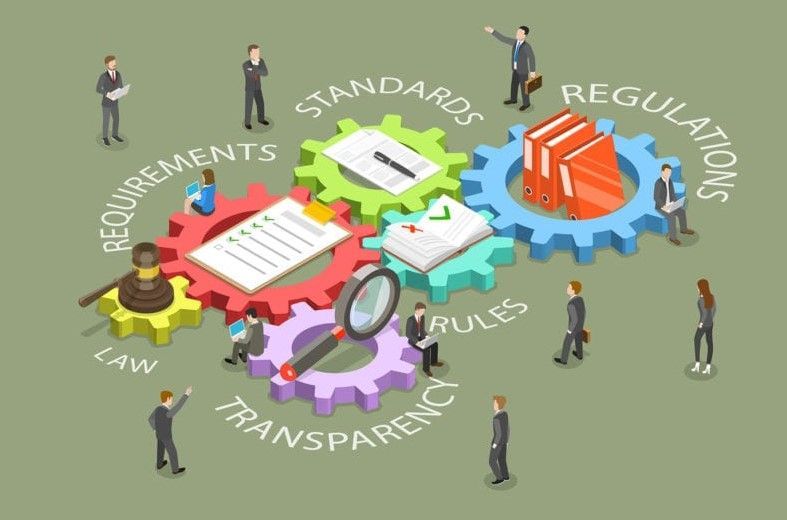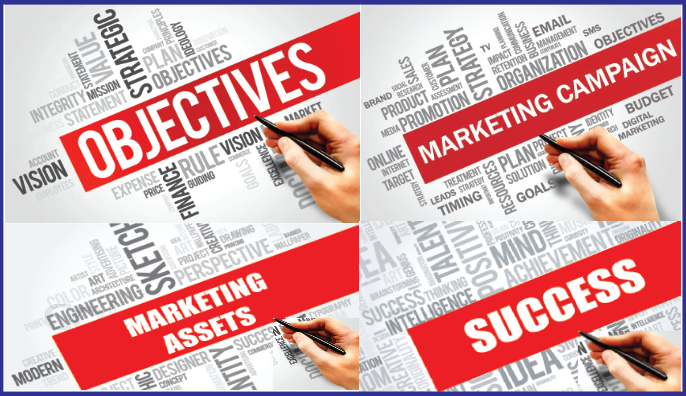Position Your Sales Team to Succeed
June 17, 2025
We’re half way through the year. Has your team put a winning sales puzzle together or are there still holes in the picture of success you want to create? In this mid-year special report, Senior Consultant Don Minner poses 10 questions to think about in order to make the most of the second half of the sales year. If you’re not satisfied with your answers, don’t wait. Fix the problems yourself, get help inside your company, or go outside for the answers you need.
By Don Minner, Senior Consultant
Have you ever heard an executive, manager, or coach of your favorite sports team say, “We have all the pieces in place now”? Usually referring to people, coaching, training, clear objectives, modern facilities, and lots of support from others, that comment signals that he or she believes that everything has been done to equip the team for success.
If not, you may be used to hearing, “We’re still missing a few pieces,” which is a sure sign that the executive knows the team has no chance of winning soon.
It’s really no different with the individuals or teams assigned to help your business grow and become more successful. Selling is tough to begin with and even harder if you’re not providing the team with fundamental support to position everyone to achieve their potential.
Putting the Pieces in Place
As a business owner or leader, you need to put all the pieces in place, too. Completing the puzzle strengthens your business in many ways, including eliminating excuses. At the end of the day you will experience greater growth, shorter sales cycles, better margins, and a higher win rate.
Take the pulse of your business by asking yourself these ten questions:
| 1. | Are your business objectives aligned with your sales objectives and incentives? Sounds obvious, but oftentimes the sales team is being incentivized for behaviors and results on products and services that aren’t critical to the company. Or, they are being measured on steps in the sales process such as “number of first meetings,” which might actually lower their success rate. Are you rewarding results in the areas critical to your ongoing success? Have you even shared your business objectives? The more your people know the more they can get behind what needs to be done for everyone to win. | |
| 2. | Do you have the right people in the right places?
When’s the last time you honestly assessed each member of your team? Everyone goes through slumps, but do you have people who are hitting below average year after year? Maybe they would be better as an inside sales person or working in a sales support role. Or is it time to make a tough call and change the team? Is it a grind to go out in the market and look for new salespeople? Are you settling for someone when you know you could have done better? Team chemistry is important, especially if your business uses a team-selling model. Take the time to get it right when you bring on new people. Let your sales people sell. Don’t ask them to handle public relations and marketing, too. Get the right people in the right roles. There are new ways today to be sure that your new hires are at least a 70 to 80 percent “DNA” match to your best sales team members. |
|
| 3. | Do you provide training and professional development? What have you done to help sharpen the selling skills of your team? Do you provide new hires with indoctrination to your organization and sales process or just product training? If you’re in a business that relies on professionals to sell (lawyers, engineers, accountants), you need to ensure that everyone feels confident in their ability and understands their responsibility to bring in new business. In most businesses we find that 20 to 30 percent of the sales team brings in most of the revenue. What are you doing to help the other 70 to 80 percent develop their skills? | |
| 4. | Are your marching orders clear or fuzzy? Salespeople often refer to the “flavor of the month” when they talk about the ever-changing objectives of senior management. Last month widgets were most important, this month it’s gadgets, and next month it will be something else. Not only is it important to be clear about the sales focus and targets, it’s also important that you take the time to communicate the “why” behind everything. The more you get everyone on the same page the better off you will be as the team unites behind a common understanding and goals. And the “why” needs to align with the sales compensation plan. Sales compensation drives the marching orders. | |
| 5. | Does your business have a strong value proposition?
Why do good prospects too often buy from competitors? Do you need greater differentiation in ways that create value? Or, do your sales people need to learn how to communicate the value you already provide and how to get paid a premium for it? Do you understand specifically why your customers value your products or services? In other words, what’s your “story” about why your company’s products or services are better? Without a consistent message your sales team is off to a poor start. Prospects will hear a different story every time. In fact, all employees need a consistent “value story” to share about your company, a straightforward statement, at least. Consumer products often use a memorable tagline or a “jingle.” Business-to-business sales stories usually require more depth bolstered by the right questions. This value story needs to be told in the context of a prospect’s goals and challenges. Salespeople are sometimes trained to tell another kind of story: the anecdote. But too often they are not trained to use anecdotes to advance the sale. Just telling stories won’t get the sale. They must illustrate a buying motive, benefit, value, or other product attribute. Funny stories that don’t speak to a prospect’s challenges do nothing to advance the sale. |
|
| 6. | Is your value story shared consistently? So now you have a story about what makes you unique and valued. Did you update the Web site with the new messaging? Does the sales literature tell the same story? Does the PowerPoint presentation have the correct messaging? You’ve created a great story for the sales people to share. Don’t undercut their work. Align the messages in all your marketing channels and tactics. If you don’t have time or resources, get some help. Your credibility with prospects and customers is at stake. | |
| 7. | Do you have a marketing plan? What are you doing to help drive lead generation? Are you creating content that prospects would like to receive? Are you putting it in their hands? Assess your marketing communications and make sure they align with the sales objectives. Again, it seems intuitive, but often the marketing efforts are not aligned with seasonality or other specifics of your selling and buying cycles. You need a plan that provides air cover to support your on-the-ground selling. | |
| 8. | Are you filling the leads pipeline? One of the most common refrains in any business is that “we need more leads.” You can push the sales team to be out more and to be making more cold calls. However, you can also take steps to help find and qualify leads so your team’s valuable and limited time is spent with companies more likely to need and purchase your products and services. In addition to focusing some of your marketing on lead generation (e-mail marketing, social media, events, shows, direct mail, advertising), consider a third-party lead generation or appointment-setting service. Such a service will focus exclusively on getting meetings with qualified individuals who have an interest and need today. | |
| 9. | Are support tools in place? Do the sales people have a great Web site to send prospects to visit? Do they have persuasive sales literature to leave behind? Are you holding briefings, webinars, conferences that leverage lots of prospects in one place at a time to lower your prospecting costs? Are you tired of hearing requests for a demo or something “flashy”? You need to get in the trenches and find out which support materials do need to be created or redone. | |
| 10. | Are you capturing data and learning from it?
Most businesses have some form of customer relationship management (CRM) software system. Yet, I would bet that most also feel they are not tapping into all the potential a CRM system has. Bad information in equals bad information out. It all starts with usage. Contact details must be entered and kept current and so do notes about sales calls and deal status. If your sales people see your system as out of date or painful to use, you’re in trouble because they won’t use it. You need to focus on communicating to the team about using the tool in place or find something more user friendly. With a good system, you and the team will benefit by knowing more about your prospects and pipeline. Also consider conducting a win/loss analysis on a regular basis. One of the easiest ways to understand your prospects and customers is to speak with them after every win or loss. Ask why you lost or won. What impressed them? Where did you stumble? What could you do differently? You can do this yourself, but the feedback will be more candid if you outsource this task. Use the data available to provide the sales team with better direction. |
So how are you feeling about how well you support your sales team? Do you have all the right pieces in place? For most companies it’s a continual process: one area gets fixed and two more break down. No matter where you stand today you can jump-start your business development by getting the basics in place so that your sales team can excel.
Don Minner is a senior consultant with Productive Strategies, Inc. , a sales and marketing consultancy that helps businesses find and follow the most productive paths to growth. He can be reached at dminner@productivestrategies.com
The post Position Your Sales Team to Succeed appeared first on Productive Strategies, Inc..










